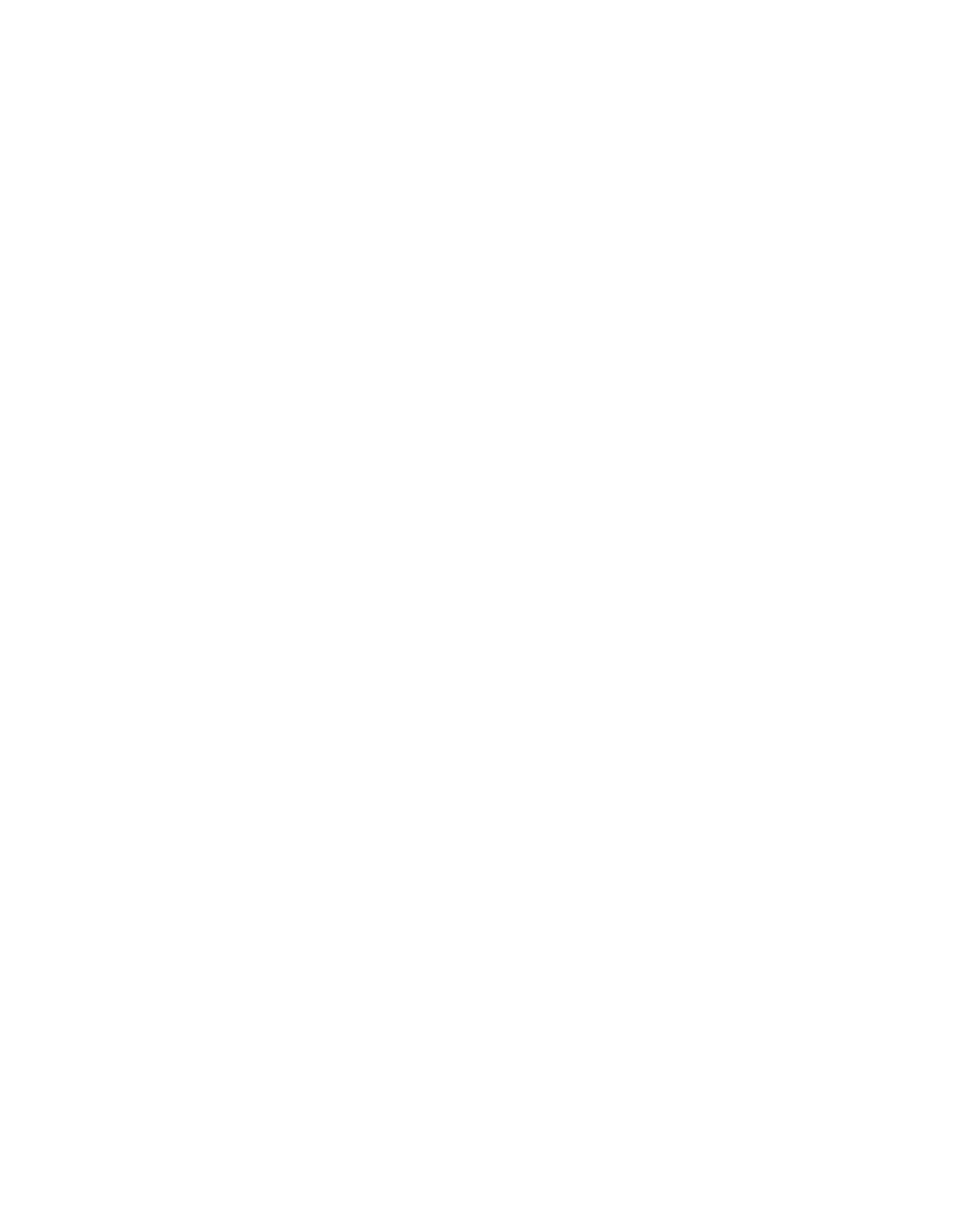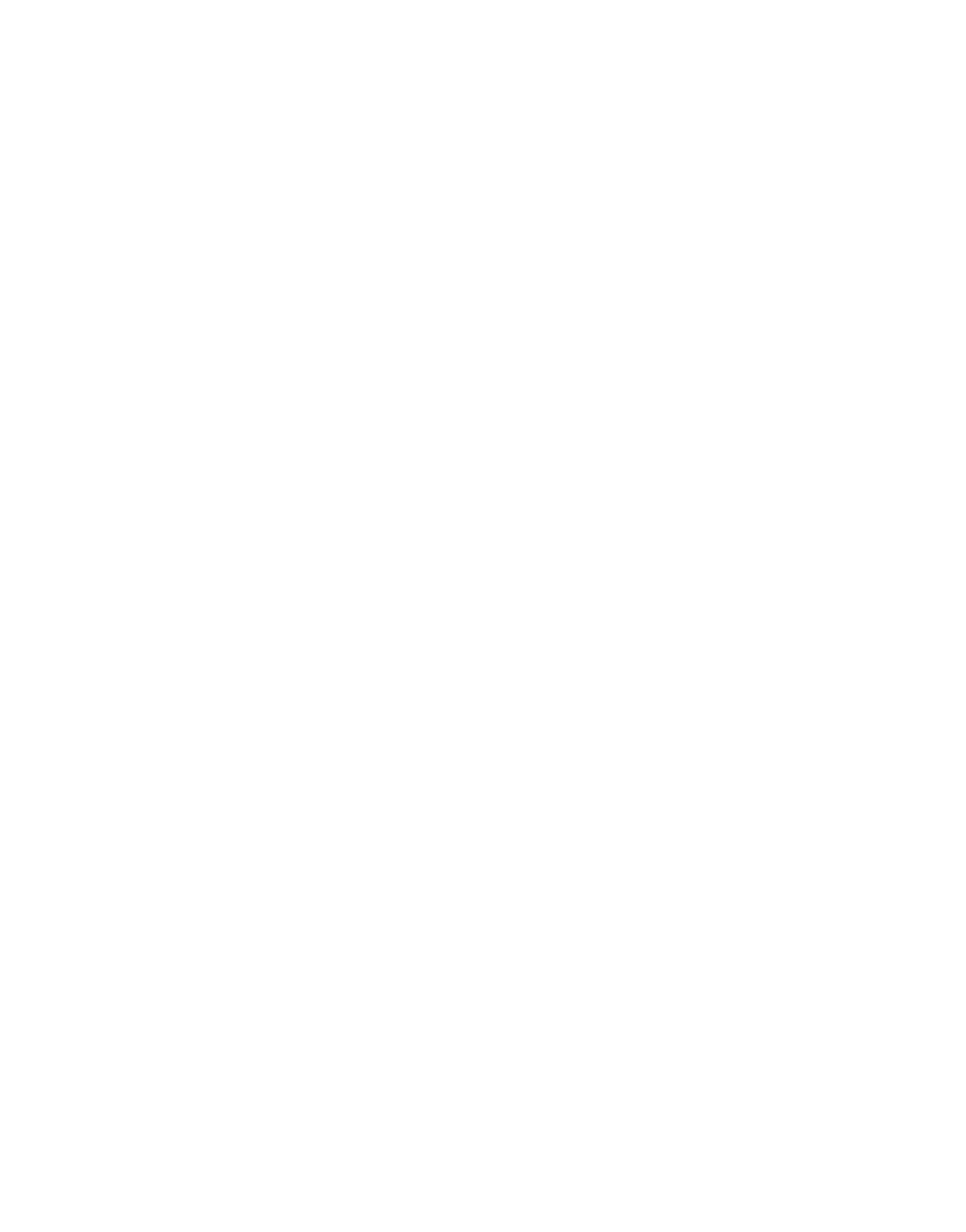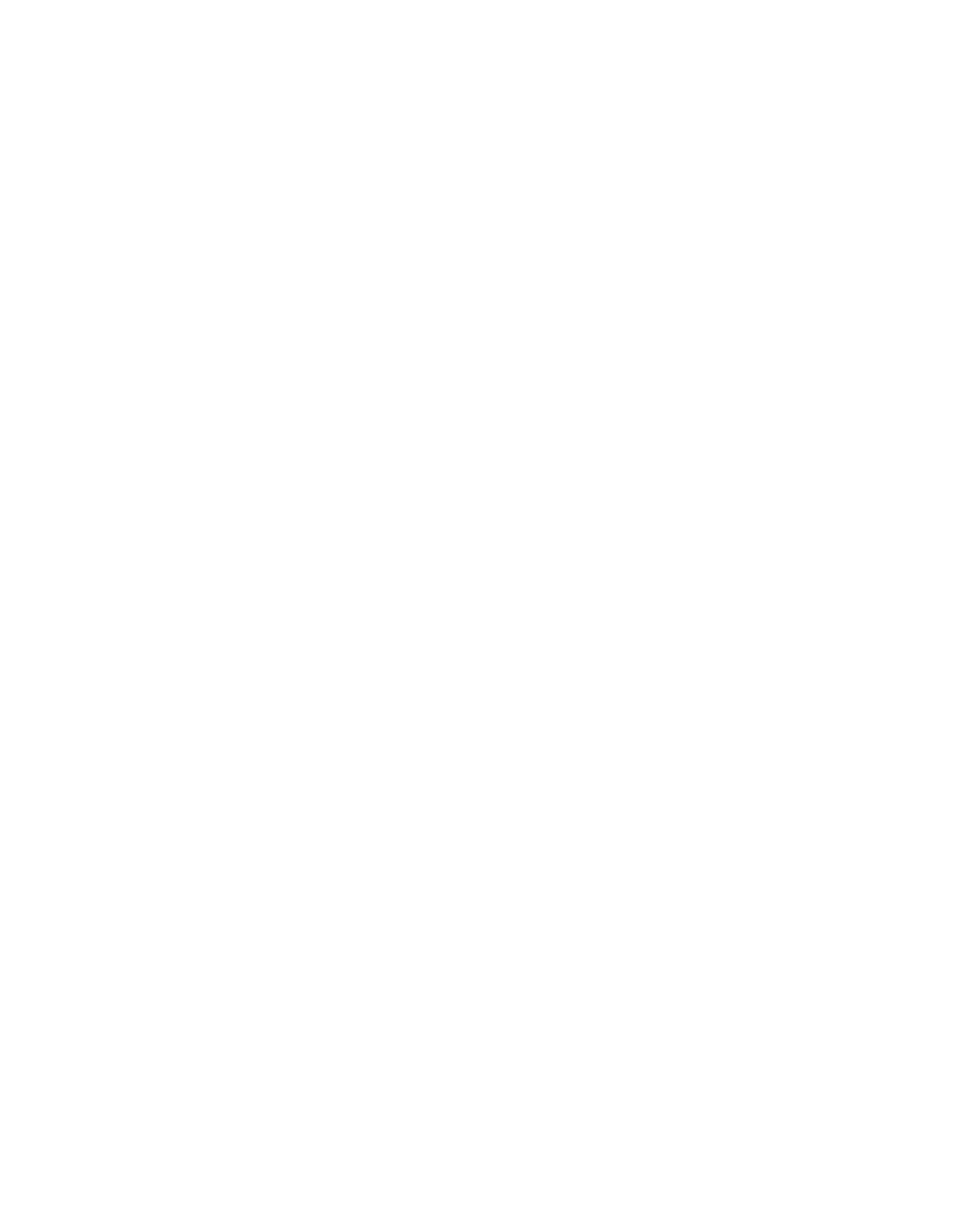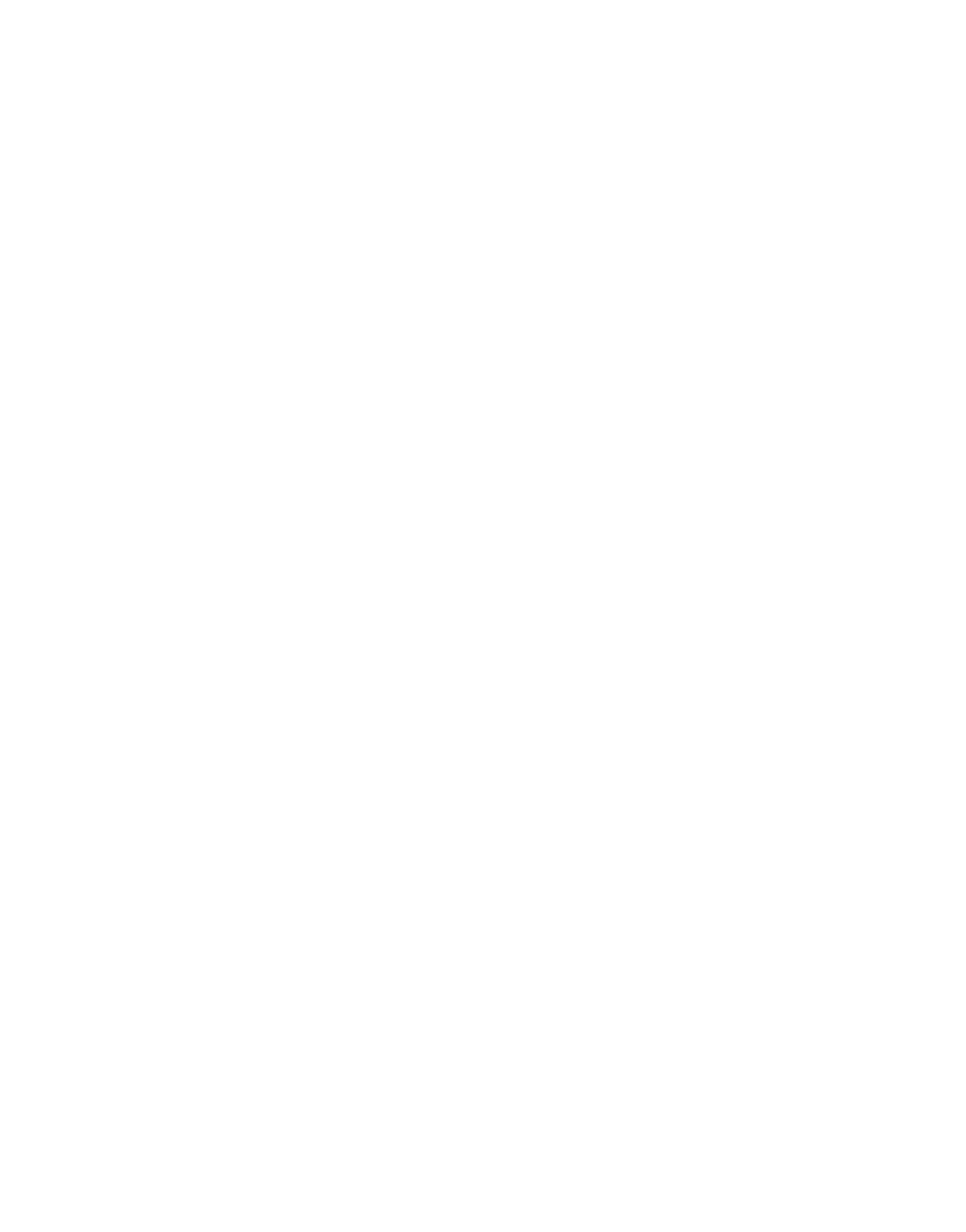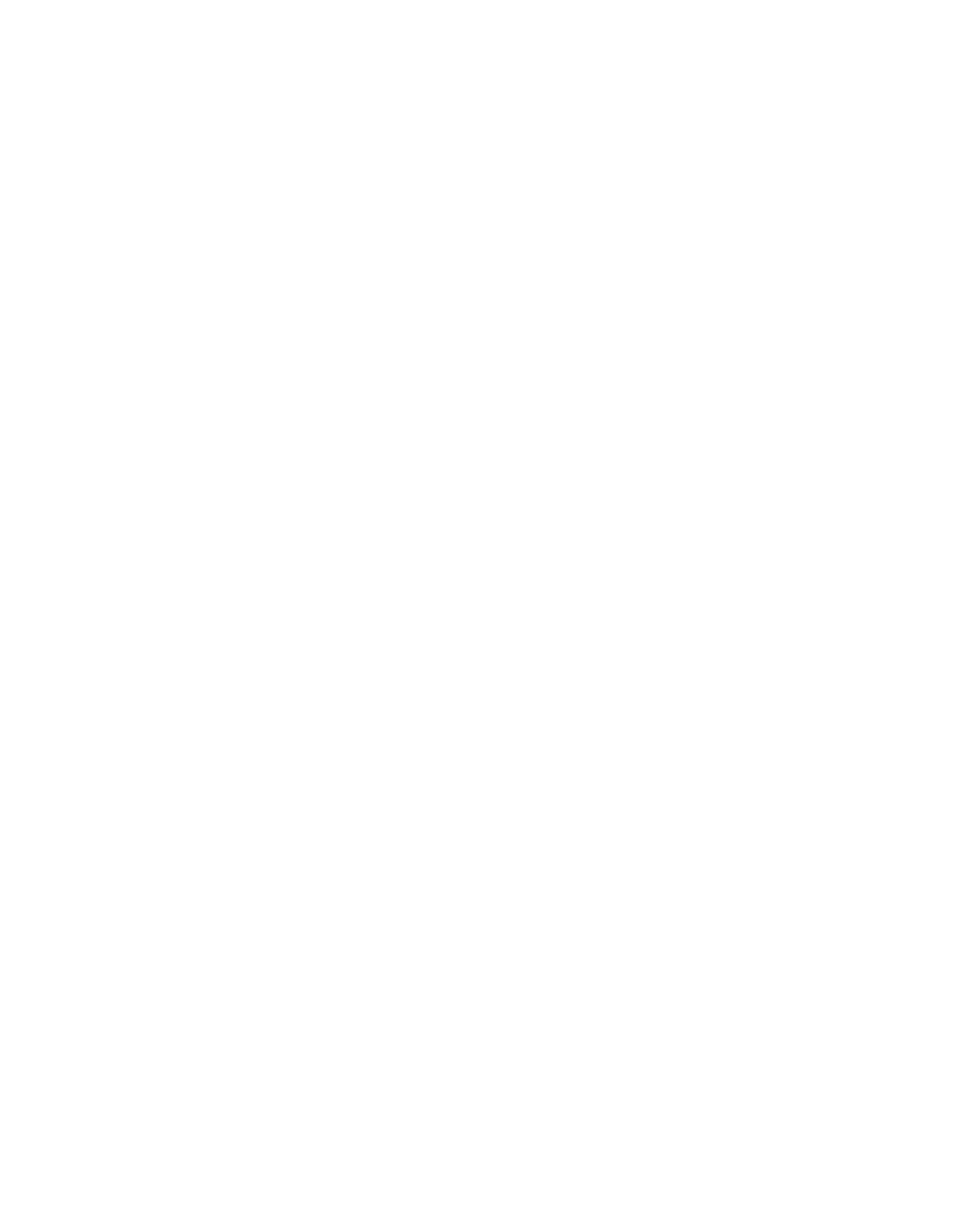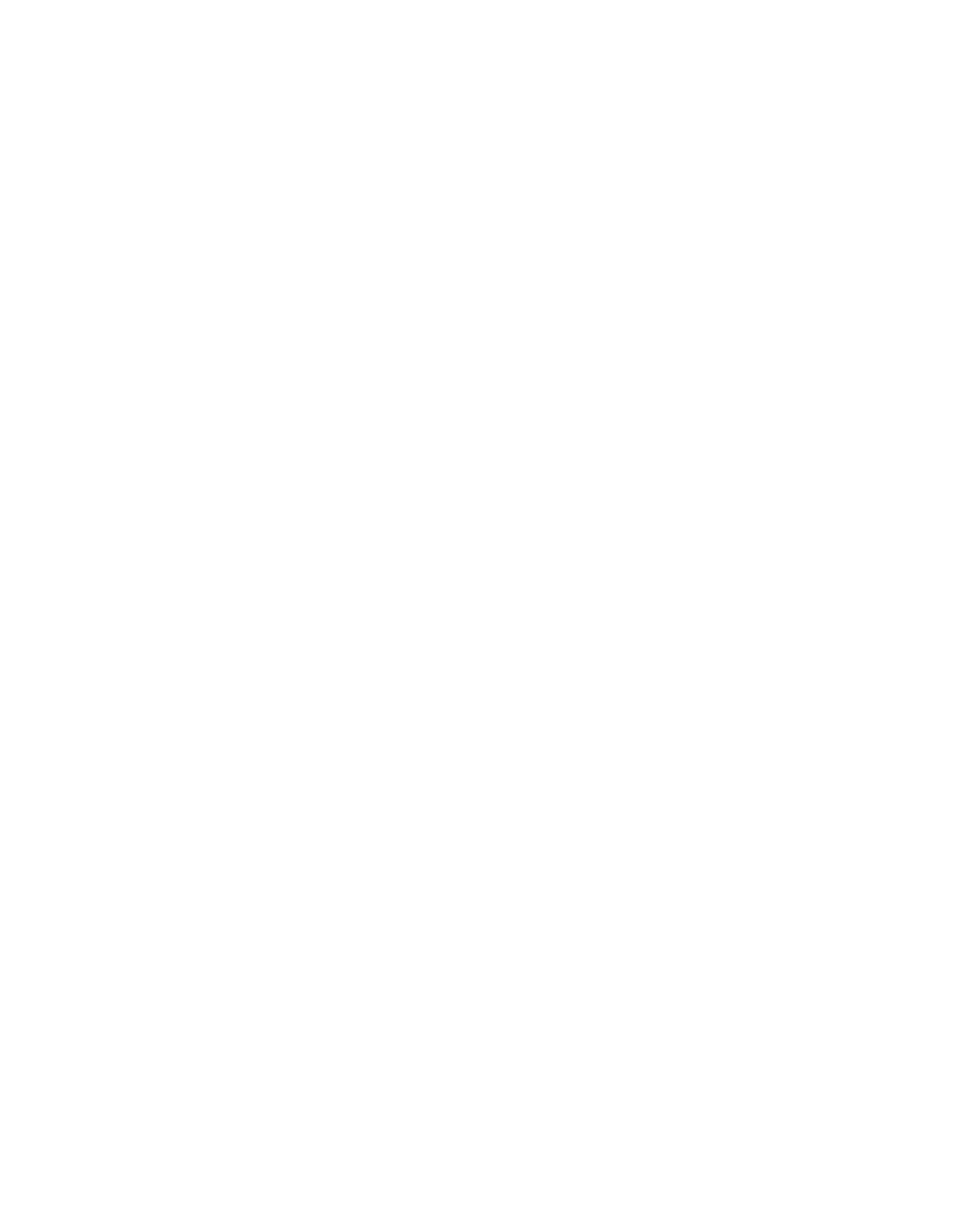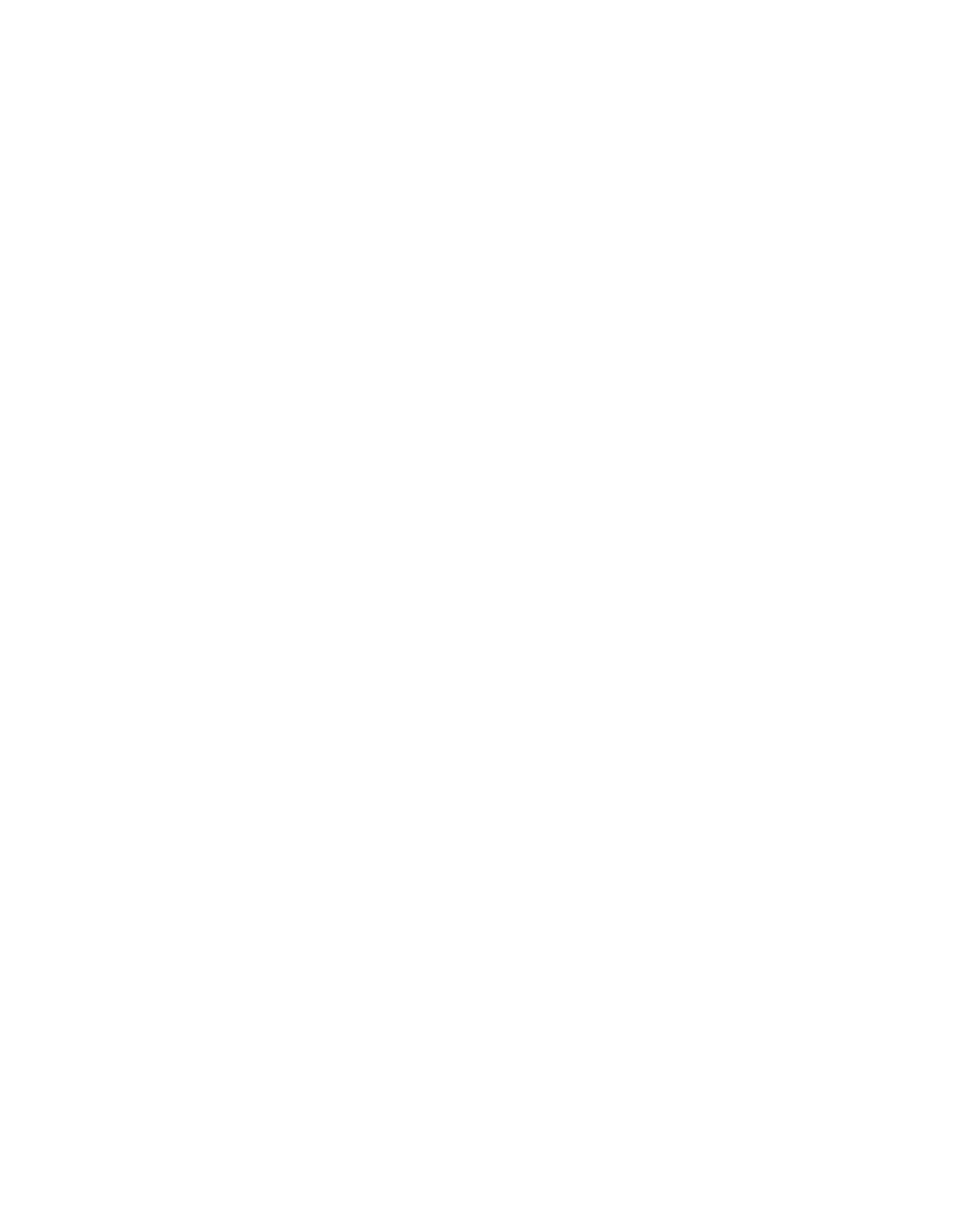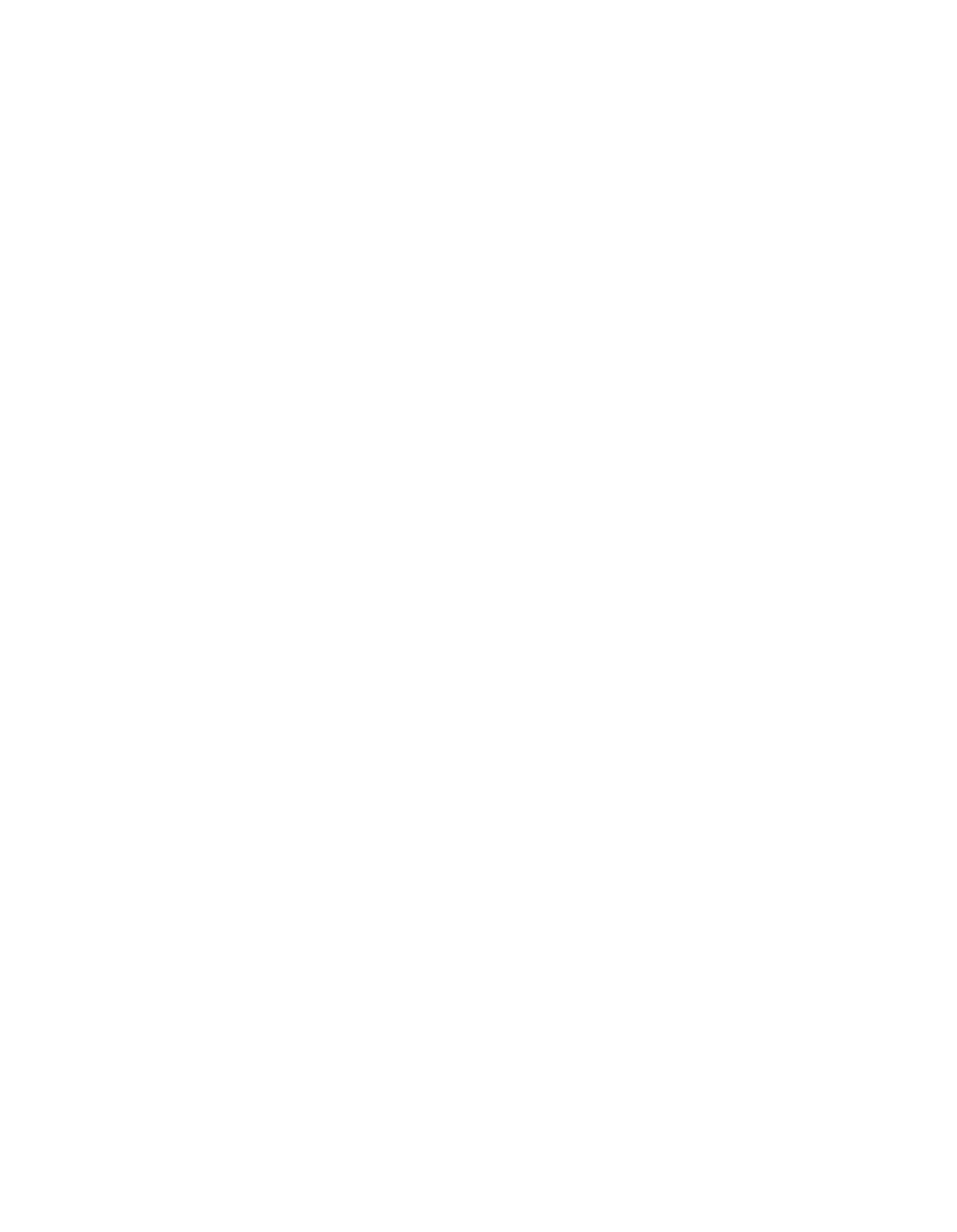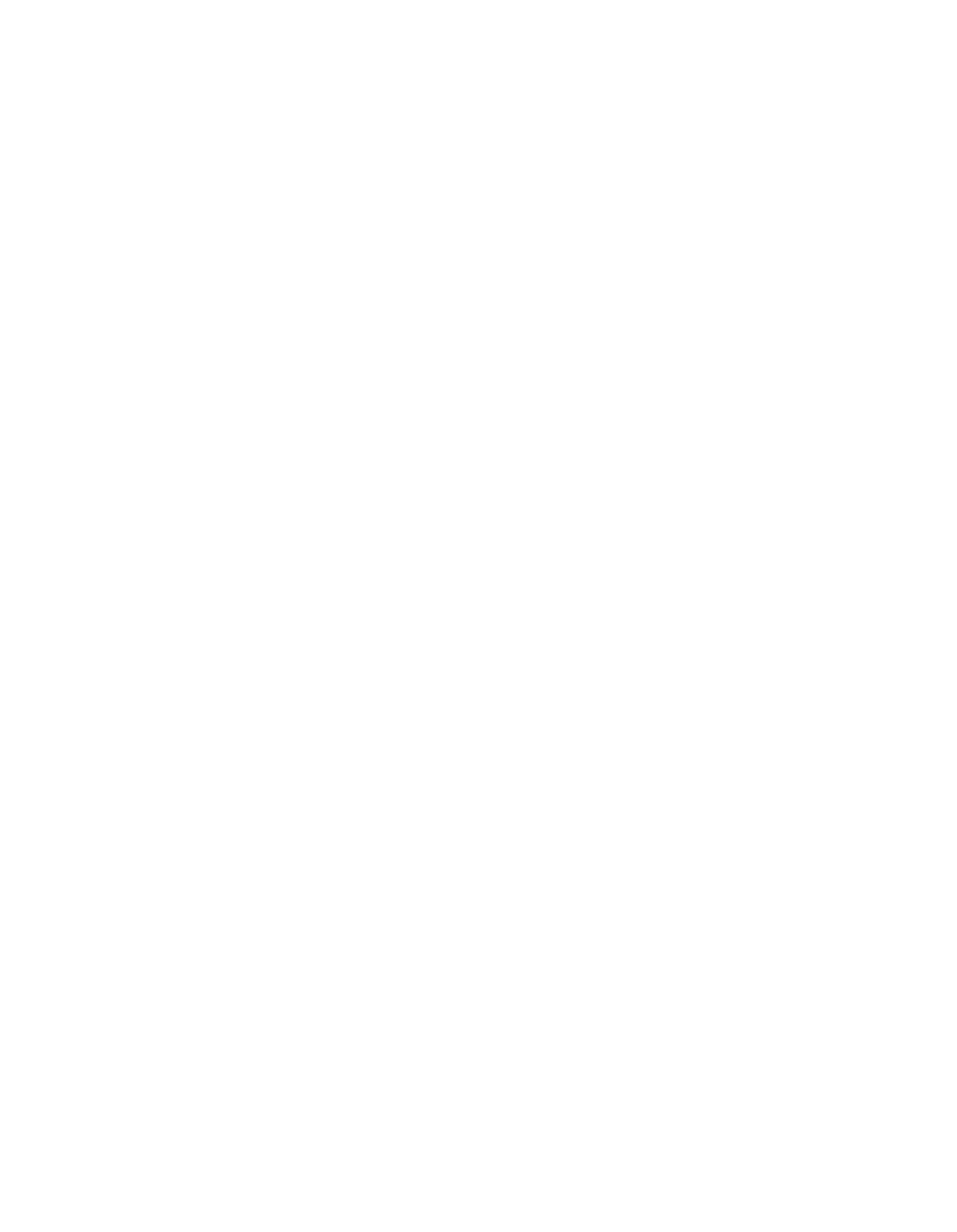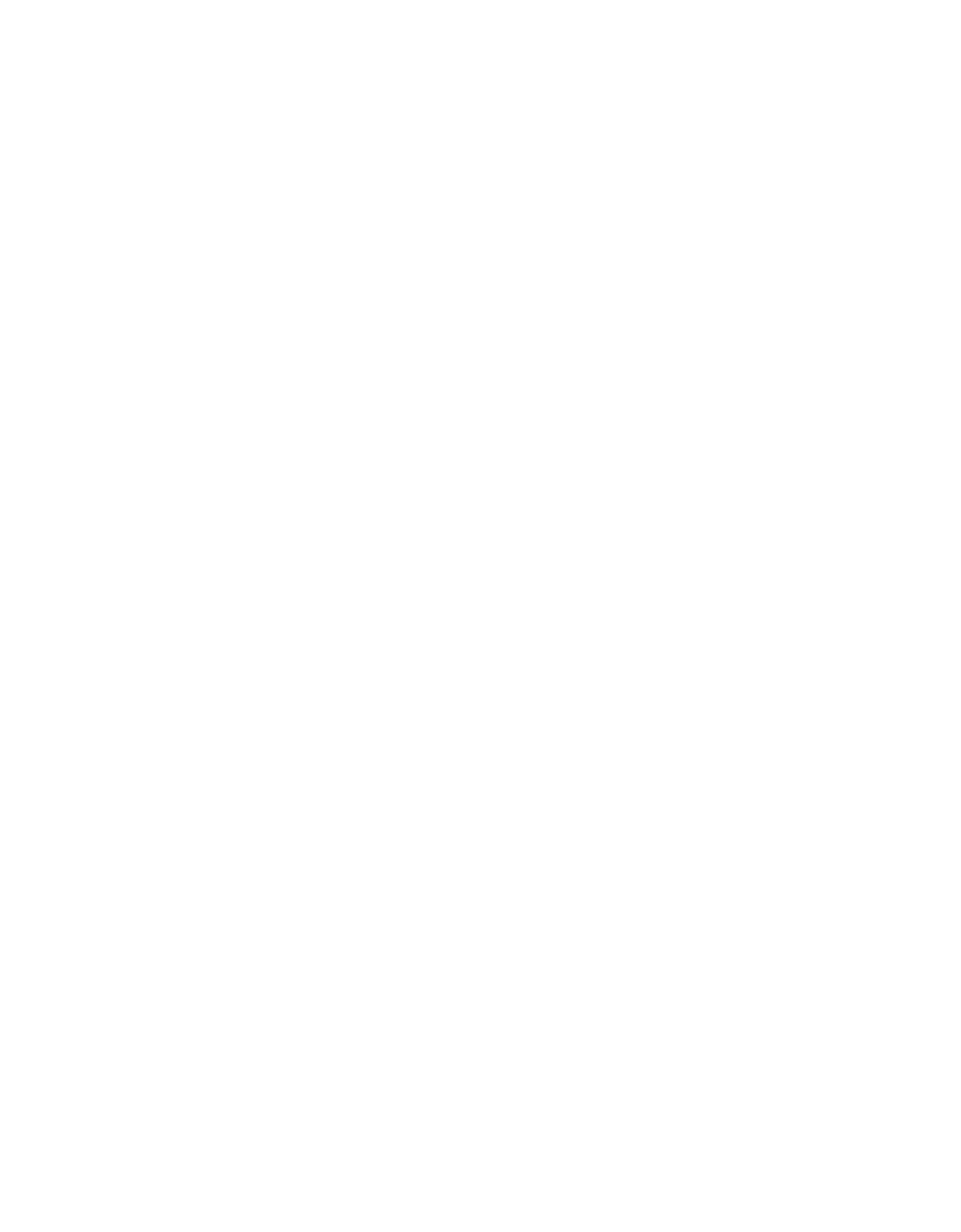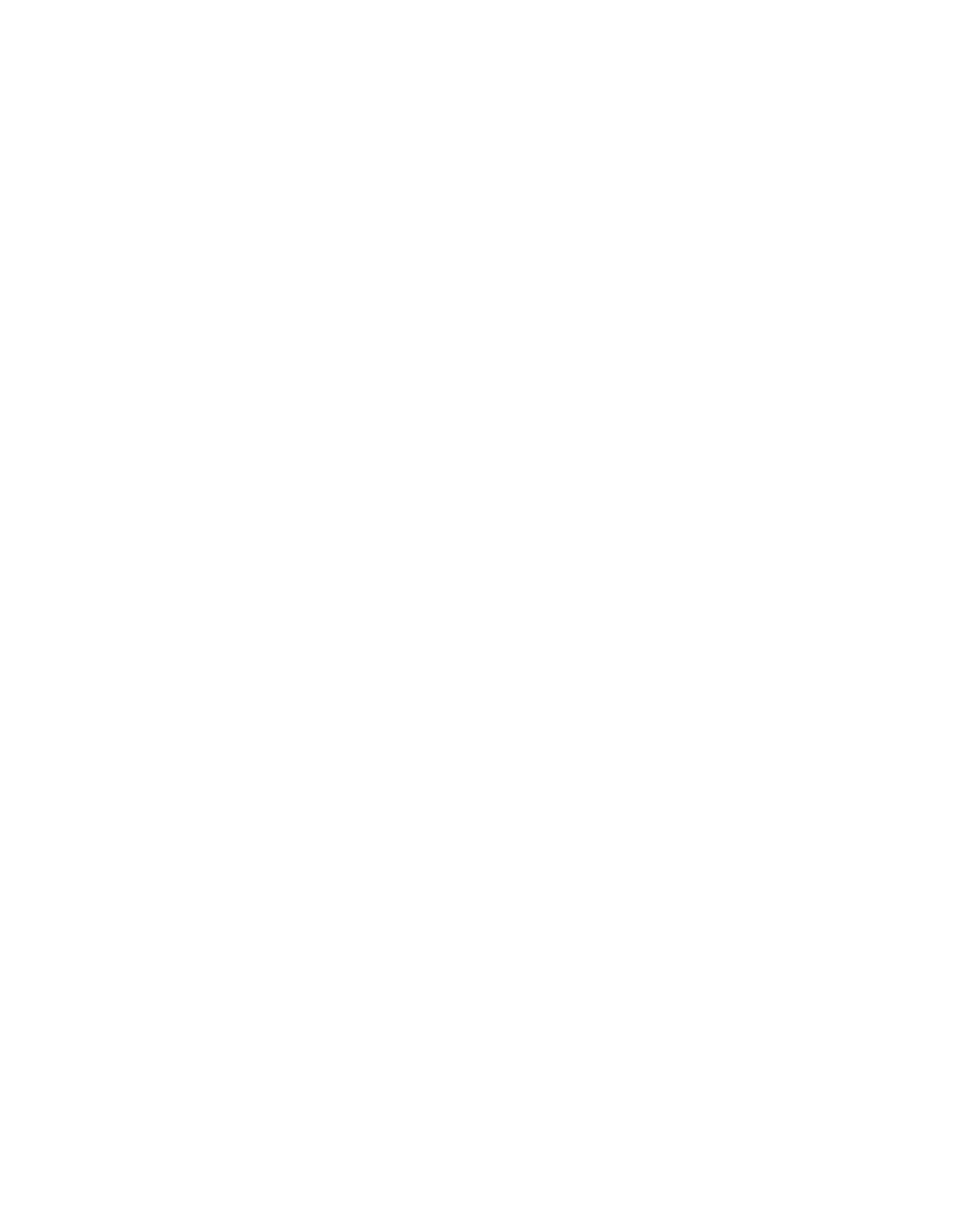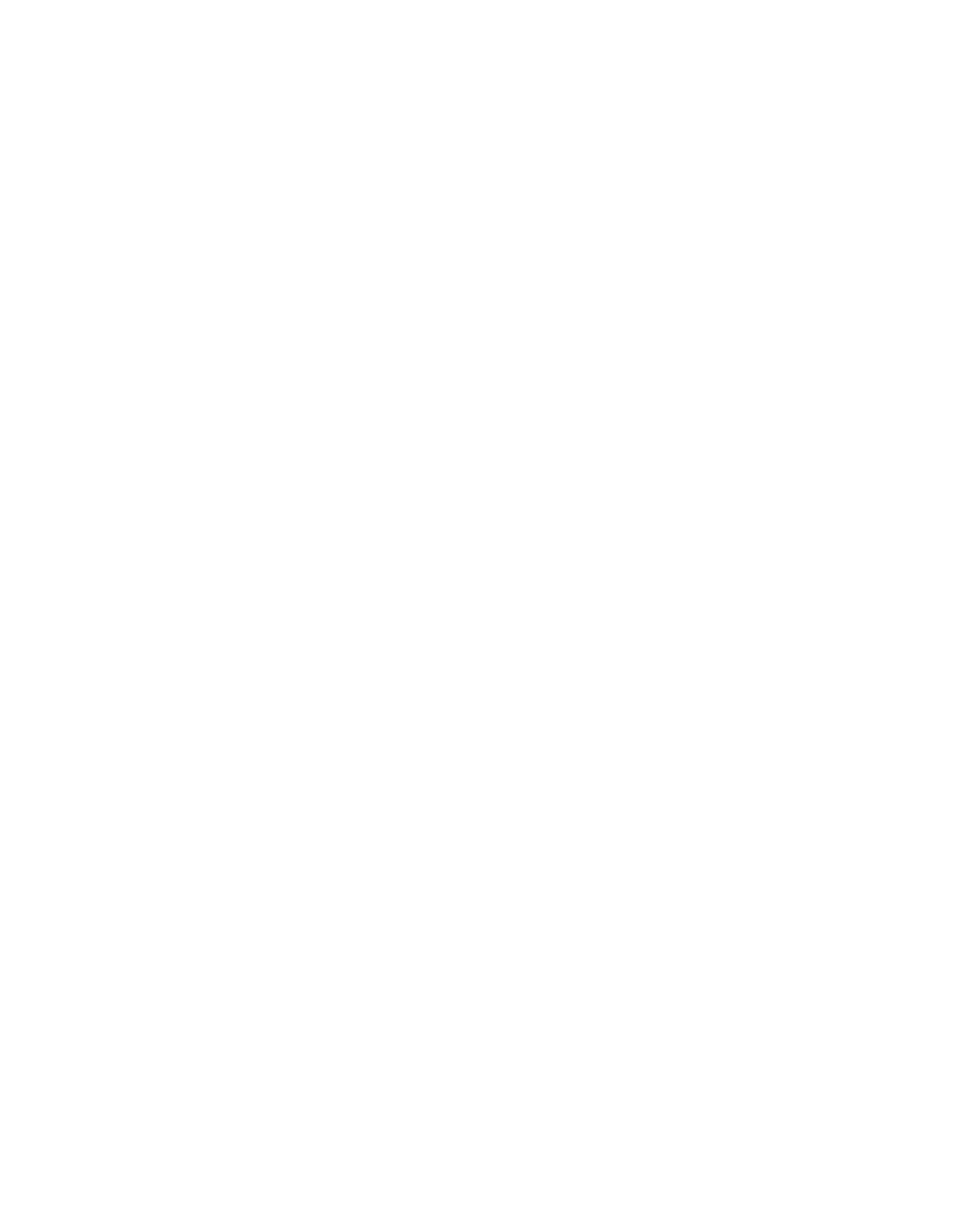ILLINOIS POLLUTION CONTROL BOARD
February 24,
1983
ir~THE MATTER OF:
SULFUR DIOXIDE EMISSION
)
R80—22
LIMITATIONS~
RULE 204
OF CHAPTER
2
)PINION OF THE BOARD
(by
I.
G.
Goodman):
On December
1,
1980
the
Board received the Illinois
Environmental Protection
Agency~s
(Agency) proposal
to adopt
emission limitations
for sulfur dioxide from fuel combustion
emission sources located within the three Major Metropolitan
Areas
(MMA)
of St.
Louis, Peoria, and Chicago.
Also proposed
was a reduction in the emission limitations for process emission
sources located in the St.
Louis and
Chicago
MMAs,
The Agency
filed its proposal in R77—15 and R78—14, two ongoing regulatory
proceedings which had been consolidated for hearings.
R77—l5 was
a site-specific rulemaking proposed by Ashland Chemical Company
(now Sherex Chemical Company,
Inc.)
to amend Rule 204(c)(l)(A) of
the Board’s
Chapter
2:
Air Pollution and finalized by Board Order
Ofl
December
17,
1981.
R78—14 was an inquiry concerning Rule
204(c)(1)(A)
instituted by the Board. and dismissed on January 8,
1981.
The Agency’s proposal was primarily a response
to the
legislative mandate that it review the sulfur dioxide emission
limits
for existing fuel combustion emission sources located
within these three MMAs and
thereafter propose
amendments, con-
sistent with the Clean
Air
Act’s National Ambient Air Quality
Standards program, which would enhance the use of Illinois coal.
(Iii.
Rev. Stat.
1981,
ch.
111½,
par. 1009.2).
On December 19,
1980 the Board docketed the Agency’s proposal
to amend Rules
204(c)(l)(A), 204(d),
204(f),
204(h)
and 204(i)
of Chapter
2
as R80—22.
The Agency submitted revisions
to the R80—22 proposal
on
February 26,
1981, January 25, 1982 and June
1,
1982.
Public
merit hearings were held in East St.
Louis, Peoria,
and Chicago
on February 26, March
10 and
12,
1981, respectively,
and again
on June
.1,
1982 in Chicago.
The Department of Energy and Natural
Resources
(ENR)
submitted the Economic Impact Study of the pro-
posed
sulfur dioxide amendments,
Et~~RDocument No.
82/11, on
April
26,
1982.
Economic impact hearings
were held in Chicago
and Peoria on June
1 and 22,
1982,
respectively.
The record was kept open for public comments until July 14,
1982.
The Village of Winnetka
(Winnetka) requested an extension
on July 12,
1982.
That motion was granted and the comments filed
5 1-229
2
by Winnetka on July 30, 1982 were accepted.
The rules proposed
by the Board for First Notice were published in the Illinois
Register on September 17, 1982.
Comments received during the
ensuing forty-five day
period
are discussed
below.
On October 1, 1982 Winnetka requested a public hearing pur-
suant to the Illinois Administrative Procedure
Act,
flll. Rev.
~
1981, ch.
127, par. 1005.01(a)).
Since such a hearing
wo~ffdinevitably delay the
remainder
of this rulemaking, two
dockets were established by the Board on October 14, 1982.
Tfinnetka’s request for a site specific rule was designated
as Docket B and hearings held on November 3, 1982 and December
15,
1982.
The rules proposed for First Notice were assigned to
Docket A, and it alone is the subject of this Opinion
and
Order.
On November
1, 1982 Granite City Steel Division of National
Steel
corporation
likewise
requested
an
additional
hearing
under
the
ILlinois Administrative Procedure
Act.
Id.
This request
was untimely
and
no hearing was held.
Nevertheless, the
Agency
agreed with Granite City Steel’s objection
that
the language
proposed to control its fuel combustion process emission source
was inappropriate.
On
December
3, 1982
the
Agency submitted
language amending Rule 204(j)(1) accordingly and consequently,
Granite City Steel waived its hearing request.
ftiission limitations for sulfur emitting sources were among
the first air regulations promulgated by the Board in 1972.
Since then the rules for fuel burning emission sources have
been contested
and
are even
now remanded
to the
Board.
Yet in
these
ten years
the original national ambient air quality stan-
dards for sulfur dioxide have remained substantially unchanged;
the primary annual standard
has
been attained statewide in
Illinois; the control technologies originally considered have
proven feasible; and compliance with the original Board emission
limits widely achieved.
Two new concerns impacting control of
sulfur dioxide have
developed
over the
ten
year span.
The need
to
utilize
more
domestic
fuel
has
become
apparent
for
a
healthy
economy.
This realization is especially important considering
Illinois’ reserves of high sulfur coal.
Bowever, it is also
probable that further reductions in sulfur dioxide emissions
are necessary for a healthy environment.
Cognizant of these
conflicting developments, it is the Board’s
intent to
reconcile
them as much as possible in establishing sulfur dioxide emission
limits to replace those voided by the Courts.
These limits
should also provide for the attainment and maintenance of the
air quality in Illinois for sulfur dioxide..
As noted, the his-
tory of the Board’s regulations for sulfur dioxide is lengthy.
Therefore, a brief summary precedes the analysis of the rules.
51-230
3
HISTORY
As st:ated before,
the emission limitations for sulfur dioxide
produced by solid
fuel combustion
and process
emission
sources
were among
the
first air
pollution
regulations
promulgated by the
Board,
including those for
the
St.
Louis,
Peoria
and Chicago MMA.
In
the
Matter
of
Emission
Standards,
4
PCB
298 April
13,
1972.
Rule 204,
as adopted,
provided future compliance dates for both
types of emission source:
May,
1975
for
solid
fuel
combustion
sources
and December,
1973
for
the
process
emission
sources.
in
30
doing,
the Board acknowledged that the control
technologies
envisioned by these limits were only then rapidly developing.
For
this reason and because compliance alternatives included switching
from
high
sulfur coal
to
limited
reserves
of
low sulfur coal, oil,
or gas,
these emission limits were not
uniform
statewide, hut in-
stead geographic
and
source
determinative,
It
should be noted that
Rule 202:
Visual
Emissions and Rule
203:
Particulate
Emissions
were adopted concurrently
with
Rule
204:
Sulfur
Limitations.
The
adoption of Rules 203(g)(l),
204(a)(l) and 204(c)(l)(A)
was successfully appealed at the appellate and supreme court level.
Commonwealth Edison
Co!p~anl v.
Pollution
Control
Board,
25 Ill.
App.
3d
241,
323
N,E.2d 84
(1st Dist. 1974),
62
Ill.
2d 494,
343
N.E.2d
959
(1976),
These specific rules pertained to the
particulate
and
sulfur
dioxide
emissions
for
sources located
within the three largest
MMA,
In
its
remand,
the
appellate
court
instructed
the Board “either to validate these
rules
in
accordance
with
Section
27
of
the
Act
or
to
prepare proper
rules
as
substitutes.”
Id,
at
96~
In
affirming
the
Appellate
Court,
the
Supreme
Court
introduced
the
notion
that the
Board~s
record
was
insufficient
as
to
whether
simultaneous
co~~liance with
Rules
203
and
204
was
technically
feasible
and
economically
reasonable.
The
higher
Court’s
decision
also
cited
the
fact
that
“a
weight
of
new
evidence”
had
become
available,
presumably
a
reference
to
the
Board’s
inquiry
hearings
into
sulfur
dioxide
rules
(R74-2)
and
the
~gency’s
proposal
for
sulfur
dioxide
rules
(R75—5),
and
like
the
appellate
decision,
directed
that
the
contested
rules
be
validated
or
appropriate
new
rules
adopted,
Thereafter
the
Board
consolidated
the
records
in
R71-23,
R74-2
and
R75—5
and
held
two
additional
public
hearings.
It
snould
be
noted
that
just
prior
to
the
Supreme
Court’s decision
the
Envir3nmental
Protection
Act
was
amended
to
require
1)
economic
impact
studies
(EelS)
and
hearings
in future
rulernakings
and
2)
adoption
of
regulations
by
the
Board
prescribing
conditions
Eor
sulfur
emission sources to use intermittent control systems
(ICy).
The
Supreme
Court~s
decision
acknowledged
the
ICS amendment,
hut was silent on the EcIS amendment,
Consideration
of ICS was
deferred
until
final
rulemaking
in
R74~2 and
R75—5
to avoid intro-
ducing a
new
rulemaking
in
the validation process.
No economic
impact statement was prepared or hearings held,
An abstract of
the conso1 tdated record with its “wealth of information” was pre—
p±~red
by riarder
& Associates,
On
July
7,
1977
the
Board validated
51-231
th’~
remanded
rules,
after
reviewing
the
pertinent
information in
the
record
and
considering
the
issues
identified by the Courts.
27
PC.B 57.
Therein
the
Board
decided
that
an
economic
impact
study was not necessary
for
validation,
and relied instead
on
the economic evidence
already
in
the
record,
Furthermore,
the
opinion stated that the
“Marder
report”
served only as an aid,
and not an analysis
of
the
merits
of
the
information,
Neverthe-
less,
the validation
of
the
rules
was
vacated,
Ashland
Chemical
Corn~an~
V.
~
utin
olBoard,
64
Iii,
App~
3d 169,
381
N, E.
2d
56
(3d
Dist,
1978) and Illinois State_Chamber
v~Pollution
Control
Board,
67
Ill, App.
3d
839,
384
N.E,2d
922
(1st
Dist,
1978).
I3oth
courts
declined ruling on the
substantive validity
of the R71-23
regulations and instead
voided the Board’s
validation
on procedural grounds.
Among
other
things,
both Courts found that
the
Board’s
use
of
the
Marder
report
without
public
hearings
on
the
same
violated
due
process
rights
and
that
Section
6
of
the
Act,
requiring
an economic
impact
study
and
accompanying
public
hearing:~had not been
complied
with,
Validation having
failed,
the
Board
instituted
inquiry
pro-
ceedings on the remanded sulfur
dioxide
rules
(R78—l4)
and the
particulate rule
(R78—l6)~
On
December
14,
1978,
these regulatory
proceedings were consolidated
with R77—l5
(the
Ashland site—
specific proposal)
and R78—15
(Rochelle
site—specific proposal)
for hearing purposes~
Final
action
on
R77—l5
was taken on
December
17,
1982 and on
February
24,
1983 on R78—15.
On February
15,
1979, the issues outstanding from the combined hearing
record
in R7l-23,
R74—2,
and
R75—5
were
resolved~ Sulfur dioxide
emission
limits
for rural
fuel
combustion
sources
including an adjudicatory
procedure and
formulas for site—specific limits
were adopted in
the
consolidated order for R74-2 and R75-5,
ICS rules were
not
adopted, having been
subsequently
barred
by
amendment
to the Clean
Air
Act
as
a
dispersion
enhancement technique,
As stated
above,
the
Agency’s
proposal
for
emission limits in
the
MMAs
was
sepa-
rately
docketed
as
R80—22,
R78—l4
(sulfur
dioxide inquiry) was
shortly
thereafter
dismissed.
R78—16
(particulate rule inquiry)
Wa:3 also
dismissed
with leave to reopen
should simultaneous com-
pliance with the particulate
and sulfur
dioxide emission limita-
tions become an issue
in
R80—22.
It
should
be
noted that
R82~1,
another Board proceeding concerning
Rule
203(g)(l),
has been
instituted, with further action dependent on submittal of the
economic impact study.
Therefore, resolution of the issues
involved in this rulemaking (R80-22) will hopefully
conclude
the entangled regulatory
history
of
sulfur
dioxide
since
the
Commonwealth
Edison
appeal.
ANALYSIS
OF
THE
REGULATIONS
Fuel Combustion Emission
Sources
The limit
for sulfur dioxide emissions
for existing sources
th~ three
MMA5
was originally
adopted
at
1,8
pounds
per
mu—
lion
British
thermal
units
(lb/mBtu),
4 PCB
298,
Compliance
with
this
and
the
other
i
t
cc
~
irrently
adopted
antici-
pated
that
air
quality
sta
e
id
~i
I
be
better
than
the
national
levels ~sLablished
i
9
J
t
~al Athient Air
Quality
Standard
(NAAQS)
for
s
Lfu
1
~i
i
c~udes
two
primary
standards:
an
annual
standard
of 30
~l
80
u~
ii
~
aid
a
24
hour
standard
of 0,14
ppm (365 ug/m3
~on
y
ta~idardbased
on
3
hours
of 0,5 ppm
(1300 ug/u
o
olstions of the
annual
primary
standard
nave
bc
y
f
the
three
MMAs,
The
short-term
pr~m~y
L
r
d
i
ni
v~
lat~d
in
all
three
MMAs,
hub not
since
~9
7
i
a
aid
Peoria
Violations
of
tile
secondary standard
iv
ir~~d
East
St~
Louis
and
Peoria.
Monitoring aloie
ie ther cai p~oide a plan to
achieve air
quality
in
the
St.
J4oSib
1’b~
~iu~
i~ibe
~mine
the
extent
the
limit
may
be
relaxed
in
the
other
ti
MMAs
and
the
NAAQS still be
maintained,
Forecasting
ot
tb
s
type
must
be
developed
through
air quality analysis.
Tie~ef~c,regional air
quality analyses,
including
base
and
strategy
a~ialy~cs, wcre
prepared
for
each
of
the
three
MMAs.
The
modc I ing
tori.
t
used
for
each
of
the
three
MMAs
was
basically
the
sane
a.i
~ere
the
data
requirements,
The
data
information,
on
the
tne~
ad
were
geographically
specific.
Each
base
analy~
s
ir~v
red
the
RAM,
a
modeling
pro-
gram
having
both
a
rura
aid
Ia
v~r ior~
The
rural
version
was
inodt ~ied
to
coeforn
‘~
c
4
n~aIe1,
the
CRSTER,
which
was
used
to
account
for
is
I r~. I
ci
t
sloe
sources,
Modeling
is
intended
t
deror~r~te
that
should
the worst
meteorological
circumstar~c~a a~I
periods
of
maximum
emissions
coincide, the NAAQS
wou
d
1
e
~cc~ed.
Except
for
the
St.
Louis
MMA,
modeling
as
i~L.
the short—term
standards,
i.e.,
tne
2
ur
I
I
a
atandards,
This
was
considered
sufficient
sin~e
hu
si
rt—tern
standards
are
con-
sidered
more
stringent
thai
the
it
rary
annual
standard,
It
should be
noted
tint
rt
i
i
~
rr~i~
~
standard
has
already been
demonstrated
t
t
a
oni~orie~
The
emission
invent
r e~
nor
med the location,
magnitude,
fr~quency,
duration
and
relativ
nor tribubions
of
the
fuel
com-
bustion emission
source’-
~ach
arei
Generally,
only
point
soure~semitting
more
tlar
3
tore
of
sulfur
dioxide
per
year
(T/yr)
were included,
and
othnL
area
sources
were
accounted
for
in
the
background
levels
Pl’~ po~nt
sources
were
identified in
the
Agency’s
total
air
sy’-t~ri
1S
which
was
compiled
initially
in
1974
and
has
since
been
cintii
o
sly
updated.
In
calculating
the sources’
impacts
or
the
sod~l
recptors,
all
sources
were
assumed
to operate
at
tLei
~x
al
o~ab1e
rate
which
was
based on the
remanded
~mission
Ime~ a
To
determine the appropria
oackground levels
for each area
studied,
localized
r~onmtoringdata
r’as
natched with
localized
meteorological
data
for
the
same
hase
ycar.
As
it
turned
out,
the
base
year
and
the
nunier
o~ nor it
rs
used
for
each
area
varied.
Since
the
sulfur
d~oxid~ monitors
operate
continuously,
hourly
averages
were
achievea
ny
averaging
the
data
collected.
6
Lastly,
to accurately complete
the air
quality data,
exclusion
angles were uniformly calculated to eliminate sources upwind
frm monitors
from the background
totals.
Emission Limits for Fuel Combustion Emission
Sources
St.
Louis
MMA
Analysis of the annual air
quality standards for the East
St.
Louis
area was performed using the Climatological Dispersion
Model
(COM).
The meteorological data consisted of data collected
between
1973 and 1978 at Lambert Field and compiled by the
National
Climatic
Center,
and upper air observations were obtained from the
National
Weather
Service
at
Salem,
Illinois.
Even
after
potential
growth
was
considered, no violations of the annual
sulfur dioxide
standard were predicted.
However, violations of the short—term
standards were predicted.
Like the
other
two
MMAs,
an
analysis
of
the
short—term
standards
was
programmed.
The
hourly
meteorological data for
1973—1977
was
gathered
from
the~same sources
used
for
the
annual
analysis.
The
RAM
(urban)
was
used
in
those
areas
which
are
basically
urban
in
nature,
and
a modified version of
RAM
(rural)
was
used
for
the
rural
areas.
The
CRSTER
model,
which
does
not
have
the
capability
to
model
several
sources
at
separate
locations,
was
used
for
the
isolated power plant,
Illinois Power Baldwin.
The
maximum
allowable emission rates of all major sources in
Madison,
St. Clair,
and Monroe Counties were used in the model.
Individual Missouri emission sources were not used because the
maximum allowable emission rates
and
stack parameters were not
available.
These emissions were,
however, reflected in the
background
determination.
Emissions
due
to
growth
were
not
explicitly
modeled
in
this
analysis.
It
was instead assumed
that
any
additional
emissions
would
be
minor,
and
readily
absorbed
since
the
model
was
already
conservative
in
that
all
existing
sources
are
presumed
to
operate
at
maximum
allowable
rates.
Furthermore, any new major sources would be required
to show no significant impact on air quality pursuant to the
Prevention
of Significant Deterioration
(PSD) or New Source
Review
(NSR)
programs.
The short—term modeling predicted widespread violations of
the primary 24 hour standard and the secondary
3 hour standard
primarily in the industrial areas of East St.
Louis
(Ex.
3,
pp.
85-86).
Consequently, a culpability assessment was made,
using
the “worst
case” days of the five year period modeled.
The results, which included background concentrations, and
Illinois urban and rural sources of sulfur dioxide,
found the
sources
in the Alton Wood River Area to be varied; whereas in
Ea;t St.
Louis
and Granite City, the elevated sulfur dioxide
levels
were
more localized and source—oriented.
The two sources
identified,
however, were process sources as opposed to fuel
corn—
i)~l5tiOrI
sources.
51-234
7
Due
to
the number
of
violations
predicted,
no relaxation of
the emission limitation for fuel
combustion
sources
in
the
St.
Louis MMA is proposed.
Sulfur
dioxide
emissions from residential
and commercial sources are predicted to increase in the next
decade, but fuel combustion emission to remain constant from
industrial sources.
In an effort to achieve attainment in this
MMA, more stringent limitations for process
sources
were
proposed
by the Agency.
These will be discussed later in this Opinion.
Peoria Major Met~~tan Area
Neither the modeling done in 1978 nor recent monitoring
indicates violation of the annual standard in the Peoria MMA.
Thus, only short—term analyses were considered, on the assumption
that short—term standards are more restrictive than the
annual
standard and, therefore, any subsequent relaxation could not
jeopardize the annual attainment
status.
Furthermore,
local air
quality monitoring indicated annual sulfur dioxide concentrations
well below the national annual standard.
(R. 41.)
A five year
base analysis, using the RAM (urban and modified rural) and CRSTER
model, was developed to determine
if
the 1.8 lb/mBtu limitation
could be relaxed.
Five years
(1973—1977)
of meteorological data
from the Peoria National Weather
Service
Station was used in the
analysis.
Again, maximum allowable emissions based on the 1.8 lb/
mi3tu
standard were used along with appropriate background concen-
trations.
Terrain effects were not considered.
The results of
the base analysis predicted violations of the primary 24 hour
standard, which were isolated to
two
small areas,
and none
for
the secondary
3
hour standard
(Ex.
3,
pp. 25—26,)
A culpability analysis was then developed,
focusing on the
two receptors which had indicated violations in the short—term
base analysis.
This analysis associated these violations with
sources located at the Caterpillar Mossville Plant and Caterpillar
East Peoria Plant.
(R.
45,)
Both
of
these
Caterpillar plants
are already equipped with flue gas desulfurization equipment (FGD).
Therefore,
if the actual controlled emissions were used in the
base analysis, it is possible that violations of the primary
short—term standard would not be predicted, and relaxation of
the 1.8 lb/mBtu limit could be considered
fo.r some of the area’s
remaining existing sources.
Two strategy analyses were conducted by the Agency to deter-
mine the
extent relaxation would be possible without creating
violations of the NAAQS.
The first strategy analysis focused
on the violations predicted for
the two
Caterpillar plants
identified above.
While
it took into account the control pro-
vided by the FGDs, this analysis considered two twenty—four hour
periods,
one for the Mossvile plant and one for the East Peoria
plant.
The probability of violations occurring was confirmed.
(Ex.
3,
p.
29.)
51-235
8
The second strategy analysis studied relaxations of the emission
1.Unit for small sources in the Peoria
P04k.
CR. 192.)
The RAM
Curban) and the
MPTER
models were used.
The tOTER is a dispere
sion model which
can
simulate the dispersion of several sources’
pollutants in a moderate terrain.
Applying a data base consisting
of the relaxed emission inventory based on a 5.5 lb/miltu emission
limit, a modified receptor network, and five years of
meteoro-
logical data,
the
modeled
impacts
for all
urban
md rural sources,
and background concentrations to the MPTER, air quality
was
assessed.
It should be noted
that
the
two
Caterpillar sources
already modeled were
not
included
in the
inventory,
but
its other
two
Peoria plant sources, Mapleton and Morton, were.
CR.
192.)
Violations of the short—term standards were predicted.
CR.
194.)
Yet another culpability analysis was performed.
Caterpillar’s
Mapleton Plant, despite an emission limit of 1.8 lb/mBtu, and the
Sherex Chemical Company
were
identified as the sources of violation.
After considering these analyses together, the following
conclusions
were
made
by
the
Agency:
(1)
The cause of Caterpillar Mapleton and Sherex’s pre-
dicted violations were the Mapleton bluffs;
(2)
using roll back methodology, emission limits of 1.0 lb/
mBtu for
the
Caterpillar East Peoria Plant and 1.6 lb/
mBtu for the Caterpillar Mossville plant would be
sufficient to maintain NAAQS;
(3)
again using roll back methodology, Sherex’s emission
limit
could
be
relaxed
from
1.8
lb/mBtu
to
3.3
lb/mBtu
without
jeopardizing
the
NAAQS;
and
(4)
with
the
exceptions
of
the
Caterpillar
and
Sherex
facilities, the emission limit could
be
relaxed
from
1.8 lb/mBtu to 5.5 lb/motu for industrial boilers with
a generating capacity of less
than
250 mfltu.
CR. 195—
196.)
ft should be noted that the industrial facilities with a
generating capacity of greater than 250 mBtu still subject to the
1.8 lb/mBtu limitation were
CPC
International
Cnow Pekin Energy,
Inc.), and possibly Caterpillar sources already
equipped
with
FGDs.
Throughout the proceedings,
the
squrces
located
at
the
four
Caterpillar plants in the Peoria Milk were a subject of contçoversy.
At first a limit for the Mapleton sources was proposed.
It was
later rescinded because they were consi4ered to be new sources
and
subject
to
regulation
for
the
same
not
yet
proposed
by
the
Agency.
CR.
98.)
Furthermore,
boilers
4
and
5
at
this
facility
were not initially included in the TAS inventory because they
were under construction during this rulemaking
CR. 176),
and
they
were
not
made a part of the modeling until the final analysis.
51-288
9
Boilers
4 and 5 of the Mossville facility, although also new
sources, were included in
the
inventory
and
in the modeling.
CR. 176, pg.
12,
Sc.
3.)
Initially, a limit of 1.6 lbs/mBtu was
proposed for this facility, but later modeling indicated that
emissions up to 1.8 lbs/mBtu would not jeopardize air quality.
CR.
570.)
The Morton facility was modeled at 1.8 lbs/mBtu
and
no
violations predicted.
The
Agency
even said
that
a limit somewhere
between 1.8 and 5.5 lbs/mBtu was possible without causing problems,
assuming no new sources were constructed in the vicinity.
(R.
125.)
As for the East Peoria facility’s sources, 1.0 lbs/mBtu
was originally proposed and later relaxed to 1.1 lbs/mfltu.
(R.
208,
571.)
During the merit segment of the
Tune
1, 1982 hearing,
a third strategy analysis was presented.
The emissions inventory
for the modeling was revised to include the Caterpillar plants
emitting at their actual limit of 1.8 lb/mBtu, small industrial
boilers (less than 250 mBtu) emitting at 5.5 lb/mfltu, and CPC
International boiler
(rated at 330 mBtu) assessed at 5.5 lb/mstu.
The
Sherex boiler was modeled at an assumed stack height of 200
feet, which would allow Sherex to emit up to 5.5 lb/mBtu without
causing NAAQS violations due to the Mapleton bluffs.
Throughout
the rulemaking the Agency argued that the limits proposed for the
Caterpillar
sources
were
in
fact
the actual emissions after cone
trol
with
the
FGD5
and
that
Caterpillar
was
already
using
Illinois
coal.
Therefore,
site—specific
limits
for
three
of
Caterpillar’s
Peoria facilities would not affect their operation.
Therefore,
after the third modeling strategy was completed,
Mapleton was
excluded as being a new source; two sources, Mossville and Morton,
were limited to 1.8 lbs/mfltu, and the East Peoria facility was
limited to 1.1 lbs/mBtu.
These limitations were intended to
maintain compliance with the NAAQ standards for sulfur dioxide.
During the First Notice period, Caterpillar renewed its
objections
Cl) that it was being singled out for site—specific
rulemaking, and
C2) that its sources should be considered
existing sources.
Caterpillar also objected that as rules were
proposed, it was excluded from the exception procedure proposed
in Rule 204(c)(4)(Now Rule 204(g)).
Upon reconsideration, the specific emission limits originally
proposed
for
three
of
the
four
Caterpillar
facilities
located
in
Peoria
are
deleted.
The
site—specific
limits
of
1.8
lbs/mBtu
pro-
posed
for
Mossville
and
Morton
sources
are
unnecessary
since
they
were redundant.
Both
facilities’ sources are already restricted
to
that
limit pursuant to Rule 204(b) or Rule 204(f).
The emis-
sion limit for the East Peoria sources is also deleted.
Like the
aforementioned Caterpillar sources, those located at this factlity
are subject to the 1.8 lb/mBtu limit contained in Rule 204(b) or
Rule 204(f).
However, the Board notes, as it did in the Opinion
adopting site-specific particulate limitations for these Cater-
pillar sources, R79—ll, October 8, 1981, that some of these
sources may be subject to the USEPA’s new source performance
standards.
51-237
As
stated
above,
the
Agency
sought
a
1.1
Ibs/mEtu limit
for
the
East
Peoria Caterpillar sources.
In proposing
this limit,
the Agency relied
on
its
third
strategy
analysis.
(Ex.
10,)
This
analysis
was
based
on
an
emissions
inventory revised since
the base analysis
and
the
first
two
analyses
for
the
Peoria area
were completed.
Some
industrial
coal~fired
boilers
were modeled
to be operating at
5,5
lbs/mBtu
and
other
restricted
to 1.8
lbs/rnBtu;
for
example,
Sherex
Company
was
modeled
at
5.5
lbs/mBtu
to reflect its
commitment to raise the sources~ stack,
and
the
Caterpillar
sources
were
modeled
at
1,8
lbs/mBtu.
Out
of
100
receptors
identified by the previous three analyses,
29
were
chosen
for
this third strategy analysis.
These
twenty—nine were
chosen
because
their second—highest concentrations
for
the
1975
model year were
at least two-thirds of the air
quality
standard.
The
Agency
stated that this technique was conservative.
As it
turned out,
only those receptors with completed
concentrations
of
at
least
80 percent of the standard in
1975 were
ultimately
indicated
to have violations of the NAAQS in any of
the
other
tour modeled
years,
and apparently only East Peoria
and Mapleton
were
identified as possible problems.
The violations
predicted
at the Mossville
facility disappeared because
of
the
inventory
changes.
Having finally reached this point,
the Agency
computed
several
emission limits for the East Peoria Caterpillar
facility
to assure attainment
of
the
NAAQ
standard.
For
all
the
boilers,
a 1.1
lbs/mBtu
limit was determined to be necessary.
The
Agency
also computed
an
average
limit
for
the
Mapleton
sources.
However,
as mentioned above,
these
are
now
sources
which
will be subject
to
future
regulations.
As acknowledged by the Agency,
the third strategy
analysis
was
conservative,
and it was derived from previous
conservative
analyses.
All the sources included in the inventory
were
at
their
highest allowable rates, and all were assumed to
be so
operating at
all times.
Indication as to the dates,
times
or
number of predicted violations
at
the
East
Peoria
facility are
not
specifically
contained
in
the
record.
There
is
no
analysis
as
to
how
the
1.1
lb/mBtu
limit
was
arrived
at,
or any explana-
tion
of
how
the
relaxed
emission
limits
for
other
sources
impact
this
Caterpillar
facility.
Given
the
conservative
modeling,
and
the
absence
of
monitored
violations
in
the
Peoria
MMA
since
1977,
adoption
of
a
rule
which
would
in
effect
cap the East Peoria
sources
at
a
level
below
that
now
applicable
or
based
on
its
actual
omissions
is
not
warranted,
Durin,g
First
Notice,
Caterpillar
requested
that
the
exemp—
tion
procedure
contained
in
Rule
204(g)
be
made
available
to
its
sources.
In
eliminating
the
site-specific
limits
for the Cater—
pillar
sources,
the
proposed
rules
have
been
restructured,
and
consequently the
exemption
procedure
is
available
to
those
Cater—
piJiar sources qualifying
under
subparagraph
(g).
51~238
Chicagpflajpr
.‘StLLJ_
e
A
The air qualtt
Late
in
1981
an)
(sc.
11)
Ic ba
areas identifi
tif
Led
as
rura
strata
the
sir
q
o
tt
logical data for
c
National Weathe
c
provided the
upper
a
r
to
Lake
Michigan
were
.
sites
continuously
ope...a
c
available dispersion eo
ci.
ru
effects into account.
I
e. cii s
sources considered to
lavd
-
g
than
lOt)
V/year,
locat~.c
1
0
DuPage
Counties.
The
maxi
z
-
throughout; this way the p0.,
“
be
identified,
with
the
add- t,
or
be
specifically
constiered
The base anal4sts
it’
t
-
standards.
For the 2
h
r
a
Cook
County,
and
ore
in V
three
violations
were
r
ad
c-
d
The
Chicago
YIP
ulp’
out the Chicago area the
:
I
ic
be
exceeded.
In Coo
Co’
ficantly contributing
ft~.
i ‘t.
a
was identified in rill C
fore, its actual emiasi nb
-
0’
remaining sources iden
r
enissions
near
the
axi.
a
model.
Therefore,
rathe
Lw
i
a
that
relaxation
is not us..
is
b
£
realize4 that individual..y
tte...
that increased emissiot
ata
the
surround ing
vicinit)
I
cr&. prepared
T
tearing
d
)
Cor
those
ar as
iden—
o
demon—
.~.
eteoro—
C
cago
Midway
-
..i
her Service
tc.al
effects
due
1
eteorological
-
no
readily
a
il.
o
ake
the
Lake
1.
i’
i
r
included
point
.t
t
i
pa
t..
that
is
greater
t
i
I
“4cUenry,
Kane
and
abi.~
e
-
ton rate was used
v
olat.ors
o~vie
NAAQS
could
o
Eft
ha
rowth
need
not
itt
short—term
r
-t
~.dicted
in
ry
tt’
3 rur standard,
t~u.t
R
562.)
cdi
e
that through—
d
‘
to’
..tandards
would
c
-
ra
£deaified
as
signi—
t
ie
r
s
S
One
source
ailed,
there—
a -d
Similarly, the
c.
r~t.ibuting
-
‘1
rits
sedinthe
J
a
a
Y2t
b..termination
an
ta’.s,. a
~
it
should be
.5
lay
k~cable to prove
E.
~ar1
it
the
NAAQS
in
Unlike
tne
analyses
tor
t.
~
t.
-r
t
a
a
rs
tie
background
areas
to
be
included
ti
he
t
c.
o
a
.ad
P
be
limited
because
of
the
size
and
c
up e
y
f
th
aeog.raphtc
locale.
Pour
areas
were
identified
a’
eed
~
oac
gro
d
value
deter-
mination:
Will
County
e ~
e
‘oo
County and
northern
Cook
Coutty
a
‘c
und
levels,
actual
data
gathereC
a
di.
r
?
ronitors,
as
recorded
in
19
‘
aid
31
-
.
-
t~
honly
meteoro-
logical
data
for
1976
a
d
r
I
ii
.
ors
were
discounted
through the use of
exclu
i
n
SI
12
In
addition
to
the
base
and
culpability
analyses,
four
strategy
analyses
were
conducted
to
determine
which sources
could
he
granted
relaxed
emission limits.
Two of the four analyses were
site—specific,
and
two
looked
initially
to
the
geographic
areas
to
determine
if
any
sources
located
therein
could
profit
from
relaxed
1 i~mitations,
The
first
strategy
evaluated
the
emission
sources
in
Kankakee
and McHenry Counties to determine if the
limitation
could
be
relaxed from
1,8
lb/mBtu to 6.8 lb/mBtu without jeopardizing
the
attainment status,
Each county has one coal burning facility
and
one oil
and/or gas burning facility which is unaffected by any
relaxation.
Nevertheless, these facilities had
to
be
included
in the modeling since they each contribute more
than
two-thirds
of the total sulfur dioxide emissions per year
in
their respective
county.
The CRSTER model indicated that the
coal
burning
sources
could emit
up to 6.8 lbs/mBtu without jeopardizing the air
quality
in
these attainment areas.
The Shapiro facility in Kankakee County was individually
modeled.
It had not been included in the
Kankakee
study
since
its boilers are equipped to operate on natural
gas.
It
does
have
a single coal—fired boiler which,
if
utilized
with the
relaxed emission limit of 6.8 lb/mBtu, would not
adversely
impact
air quality
in Kankakee.
Furthermore, should Shapiro decide
to
switch
to
Illinois
coal,
results
of
the
CRSTER
model
indicate
that
the
other
coal—fired
facility
in
Kankakee
would
not be
affected,
and
the
attainment
status
would
not
be
jeopardized.
The
second
geographic
area
considered
was the areas
of
the
Chicago
MMA which were outside the areas
designated
non—attain-
ment
for the short—term standards.
Only five sources, which are
currently burning non—Illinois coal, were modeled
as
potential
candidates
for a relaxed emission limit of 5.5 lbs/mBtu.
These
emission
sources, meteorological data
from 1973
(the “worst
cas&’
year),
and previously identified receptor locations
were
input
into the RAM (urban) and MPTER model.
Background
data
for
Lake,
Will and Cook Counties were also programmed.
Only
two
sources
were identified
as
not
causing
violations
of the short—term
standards if allowed to emit up to 5.5 lbs/mBtu.
However,
as
was
the
case
for
two
sources
in
the
Peoria
MMA,
modeling
to
determine
possible
terrain and downwash problems
is
necessary
before
a
relaxation could
be
granted
to
these
sources,
They
therefore
are
potential candidates
for the site—specific adjudi-
catory procedure also proposed in this rulemaking.
Lastly, the Caterpillar facility in Kendall
County
was
modeled to determine
if the emission limitation could be relaxed
to
6.8
lbs/mBtu.
Kendall
County
is
currently
an
attainment
area
for
sulfur
dioxide.
Should
the
emission
limit
he
relaxed,
however,
the
CRSTER
model
predicts
significant
violations
of the
short—term
standards,
hut
no
violation
of
the
annual
primary
standard.
Relaxation
is
denied
at
this
time
because
the
CRSTER
model
did
51-240
13
not take into account background levels, terrain,
or building
downwash effects..,
During the First Notice, Caterpillar argued
that these same effects were not considered
for sources
in Kan—
kakee and McHenry Counties, and therefore should not be considered
in evaluating Kendall County.
However, modeling of McRenry and
Kankakee sources did not predict violations of any air quality
standards, whereas modeling for the Kendall County facility did.
Although denied relaxation at this time, this facility, like many
others, can utilize the proposed exemption procedure.
The overall effect of the relaxations proposed is that an
additional
220,000 tons of Illinois coal can be burned annually
in addition to the 120,000 tons burned annually by Sherex, Bemis
and Celotex pursuant to R77—15.
Conversions by sources in the
Peoria MMA and Kankakee and McHenry Counties from oil or natural
gas will also increase Illinois coal usage.
At this time, however,
the amount is not certain (R.648).
The increased usage of high—
sulfur coal has been adequately demonstrated, primarily on a
source—by—source basis, not to jeopardize current air quality.
In addition to the specific limitations adopted for fuel
combustion emission sources in the three MMAs,
an exemption pro-
cedure is proposed much like that available to rural
sources
pursuant
to, Rule 204(g)
(former Rule 204(e)).
Adopting the
adjudicatory format, petitioning sources are required to demon-
strate that the relaxed emission limit sought will not jeopardize
air quality.
This procedure should be readily available to
sources since they can merely premise air quality modeling on
that already completed by the Agency for each of the MMAs.
At the June
1, 1982 hearing, Winnetka sought a relaxed
emission limit for its utility company.
It submitted modeling
studies premised on the Agency’s studies, to demonstrate that
air quality would not be jeopardized if it was allowed to emit
up to 6.8 lbs/mBtu.
At First Notice, site—specific rulemaking
was denied Winnetka because the public had been insufficiently
notified of such a possibility.
The Opinion noted that Winnetka’s
source was
a likely candidate for the proposed exemption procedure..
Nevertheless, Winnetka sought a public hearing pursuant to the
Administrative Procedures Act.
Docket B was therefore established
by Board Order on October 14, 1982 to ensure that adoption of the
remainder would not be delayed.
As mentioned above, two hearings
have been held.
Docket B will be concluded as soon as transcripts
of the same are received and the record is closed.
However, with
the final adoption of the general emission limit for fuel combus-
tion sources in the Chicago MMA, Rule 204(f)
is arguably applic-
able to Winnetka’s source despite the ongoing status of Docket B.
To avoid this consequence,
a footnote is included which exempts
this source from Rule 204(f) until action on Docket B is final.
Aside from amending the rules
for fuel combustion sources
burning solid fuel exclusively, the formula for those burning
combination of fuels is amended and a new formula for steel mills
51-241
14
is proposed.
(Rule 204(i).)
The numerical limitation for dis-
tillate oil sulfur dioxide emissions is eliminated as a specific
component in the present formula.
The
new formula regulating com-
bustion of combination fuels at steel mills is self—explanatory.
At First Notice, the definition for the formula’s component
H1,,
included a reference to catalyst regenerators at petroleum refin-
eries.
Since this formula is applicable only to steel mills,
that language has been deleted.
Process Emission Sources
Sulfur compounds are emitted into the atmosphere from fuel
burned at process sources or from the process itself.
As noted
in the St.
Louis
MMA discussion, the process sources’ emissions
in that area contribute significantly to the non—attainment
demonstration.
Consequently, revised and new emission limits
are proposed which reflect these sources’ current actual emis-
sions and control capabilities.
These regulations, which impose
no immediate obligations on the regulated facilities, will not
necessarily improve air quality.
Instead these revisions will
enhance the air quality demonstration, which will in turn reflect
a larger margin for health and growth purposes.
The amendments
will also ir~surethat localized atmospheric sulfuric loading is
not inadvertently increased by area sources.
It should be noted
at the outset that the rules for process sources are reorganized
and amended into two subparts:
process emission sources and fuel
burning process sources.
The present general emission limit for process emission
sources is 2000 parts per million
(ppm).
This limit represents
a concentration standard as opposed to a mass limitation standard.
Although the concentration standard is appropriate for a general
limit,
it has its drawbacks.
For instance, correction factors
necessary to compensate
for excess air introduced into the exhaust
flow are difficult to develop.
Therefore,
wherever possible a
mass limitation standard is proposed for the emissions associated
with the ft~elburned at process emission sources.
Three processes are already exempted from the 2000 ppm
limit: processes designed to remove sulfur compounds
from fuel
combustion emission sources’ flue gas,
i.e., FGDs; existing
processes designed to remove sulfur compounds from petroleum
and petrochemical processes’
flue gas; and qualified existing
hydrogen sulfide flares at chemical manufacturing plants.
Five additional sources are proposed for exemption from the
general concentration limit:
(1) sodium aluminum sulfate manu-
facturing process;
(2)
sodium sulfite manufacturing process;
(3) secondary lead smelting process;
(4) glass melting furnaces;
and
(5) glass heat treating with sulfur dioxide process.
Of
these
five categories only two, secondary lead smelting and glass
melting furnaces, are found to significantly contribute to the
Chicago MMA non-attainment status for sulfur dioxide.
(R.635.)
51-242
15
This
is
reflected
in
that
the
rules
proposed
are
geographically
specific.
The
differences
between
the
emissions
allowed,
based
on
the
2000
ppm
standard,
and
the
actual
emissions
contributed
are
significant.
Review
of
the
processes
themselves
makes
it
evident
that these differences are inappropriate and unneeded by the pro-
cess facilities.
For example,
under the general rule, the glass
heat treating with sulfur dioxide process could emit up to 21
pounds of sulfur dioxide per ton of product.
Yet, the raw
materials as a whole used in this process can only generate one
pound of sulfur dioxide per ton of product produced.
Instead of the process—specific emission limits, these five
categories are exempted from the general concentration standard.
Exemption,
as opposed to specific limits,
will allow the indi-
vidual sources emission limits
for sulfur dioxide that are appro-
priate and readily achievable at the individual facility.
It
should be noted that none of these sources use control equipment
for sulfur dioxide.
The Agency has requested this regulatory
format in an amended proposal.
A specific emission limit is proposed for new process emis-
sion sources in the St. Louis MMA which are designed to remove
sulfur compounds from the flue gases of petroleum and petro-
chemical process, commonly known as the Claus process.
This
process is
a recovery unit intended to recapture sulfur from
the acid or sour gases at petroleum refineries.
The sulfur
dioxide emissions from this recovery process are usually more
than 9000 ppm, much greater than the 2000 ppm limit.
Therefore,
secondary recovery is required to control the tail gas emissions
of sulfur dioxide.
In-plant studies indicate that secondary
recovery units can reduce sulfur dioxide emissions to 11-13.9
pounds of sulfur dioxide produced.
This corresponds to 646 ppm
to 834 ppm, which is far below the 2000 ppm allowed by the
general rule.
Shell
Oil Company objected to this reduced emission limita-
tion for two reasons..
It had just recently installed a SCOT
(Shell Claus Off Gas Treating) process at its sulfur recovery
plant in St.
Louis.
It stated that the 1979 stack test results
obtained there and relied on by the Agency in developing the
revised limit could not be generalized since design and installa-
tion at other facilities might produce different results.
Secondly, due to increased recovery efficiency of the SCOT unit,
the primary recovery unit
is subjected to increased sulfur
loadings which result in increased emissions.
(R.l08.)
The second fear would seem unjustified based on the 1979
stack tests.
These were taken at the Claus plant, and therefore
reflect these increased emissions.
As for the first,
the revised
limit is intended to encourage the use of a secondary recovery
process as efficient as the SCOT unit at new sulfur recovery
51-243
16
facilities
as
opposed
to
low
temperature
Claus
processes.
In
proposing this limit,
it is understood that individual
facilities
might
experience problems due to design, installation or
other
facility specifications.
However, as
is the case in
adopting
all
regulations
solutions to these possible quirks must be
remedied
as
needed.
An emission limit of
14
pounds of sulfur dioxide per
ton of sulfur for new sulfur recovery processes
is proposed.
A 500 ppm limit is proposed for sulfuric acid manufacturing
plants
in the City of Chicago.
The one such plant affected
is
equipped with a WellmanLord sulfur dioxide recovery system
with
96.3
percent
efficiency.
This control equipment was designed to
meet
the
City of Chicago’s 500 ppm limit for sulfur dioxide.
(R.636),
Based on this,
the Board finds that the technology to
achieve
this reduction is feasible and economically reasonable,
This
limit is therefore proposed to achieve and maintain
the
NAAQS
for
sulfur dioxide in the Chicago MMA,
As
stated
earlier,
mass
emission
limits based on the
fuel
combustion capabilities of process sources located in the Chicago
or St.
Louis
MMAs
are
proposed.
(A typographical error
in
the
Second
Notice printing of Rule 204(j) has been corrected,
reinserting
the MMA5
language.)
Also
proposed are specific rules
for three
such
sources.
One
is
sourcespecific;
the second involves a type
of
process
source;
and the third is an exemption.
The
source
specific
limitation
is applicable
to
a
process
source
located
in the St.
Louis MMA which burns tea leaves as
a
solid
fuel.
The
proposed
emission
limit of 0~7Olb/mBtu
will
not
require
any
additional control equipment or investments by the
affected source, and will allow it to utilize its waste product
tea
leaves
in a manner more resourceful than landfilling.
Secondly,
lime kilns as a fuel burning process source are
exempted
from
both the 2000 ppm limit for process sources
and
the
1.8 lb/mBtu
limit for solid fuel combustion sources,
Lime
kilns
are
only
located
in the Chicago MMA and rural
areas and primarily
burn highsulfur coal,
Subsequently, it should be subject
to
the
1.8
lb/mBtu
applicable to other similarly located sources
burning
coal.
However,
the lime involved in the process itself
reacts
with the
sulfur to reduce the sulfur dioxide emissions to levels
below
the 1.8 lb/mBtu and therefore well below the 2000 ppm.
In
exempting
these
kilms as a fuel combustion source and a process
emission
source, the emission attributed to these sources will
be
their
actual
emissions, as opposed to their allowable under a
Board
rule.
An
exemption is provided for those sources which can
be
classified as either
fuel burning process sources or fuel
combustion emission sources.
The slab furnaces at the Granite
City
Steel
Corporation are the only known such sources since
the
furnaces
are directly fired,
The oil burned there
is too high
in sulfur
content
to
meet
the limits applicable to fuel
combustion
51~-244
17
sources,
However, it does meet the 2000 ppm limitation.
The
exemption proposed in Rule 204(j)(l) allows these sources to meet
either
limitation without switching to
fuel oil
with
lower
sulfur
content,
At First Notice, the rule was phrased in general terms which
limited emissions to the maximum amount emitted by a fuel—burning
process emission source between March,
1981 and
March,
1982.
It
was
only intended that the rule be applicable to slab reheat
furnaces,
and the proposed limit was not
intended
to
cause
any
fuel switching.
Granite City Steel commented that the limit was
inappropriate
and
the
Illinois Petroleum Council commented that
as
phrased
the
rule
was
possibly
applicable
to
petroleum
refineries.
The rule has been changed in response to these comments.
Rule 204(j)(1) now specifically names slab reheat furnaces——
eliminating the Petroleum
Council’s
concern.
Furthermore, the
emission limit is now a specified amount,
730 lbs/hr, eliminating
Granite City Steel’s concerns.
The
mass
emission
limit was calcu-
lated based on the total
fuel burning capacity of three of four
slab reheat furnaces——since only three of four currently permitted
can be operated at one time——and multiplying the percentage of
total heat input obtained from the fuel oil by the sulfur content
and the emission factor for residual fuel oil,
This calculation
was
agreeable
to
both the Agency and Granite City
Steel.
(Public
Comments received December
3
and
13,
1982,
respectively.)
Before concluding the
discussion
of the individual segments
of proposed Rule 204, the reader should note that the Rule has
again been reorganized,
This was done with the hope that addi-
tional
lettered subsections would facilitate understanding.
For
instance, the formulas found in the Rule entitled Fuel
Combustion
Emission Sources Located Outside the Chicago,
St. Louis
(Illinois)
and Peoria Major Metropolitan Area has been returned
to subsection
(e).
In so doing it follows directly after the rules containing
the emission limits for such sources,
This also means that any
site—specific limits already granted pursuant to this subsection
remain in effect.
This reorganization also means that the
exemption procedure
(Rule 204(g)) proposed in this rulemaking now
follows the specific
limits set out for fuel combustion sources.
In this way it should be
clear
that the procedure is
available
to
fuel
combustion
emission
sources
regulated
by Rule 204(c)—(f).
Economic Evaluation
At the March 12,
1981 hearing, an economist with the Agency
discussed the possible compliance costs should the emission limits
then proposed for fuel combustion sources be adopted.
The
Agency’s
permit files identified 113 coal burning facilities to which these
limitations would apply.
Only one of these,
Sherex, was out of
compliance with the limits proposed,
Therefore, the cost of
compliance
would
be
only
the
amount
Sherex
would
be
required
to
expend
to
achieve
the
3.3
lb/mBtu
then
proposed
for
its
source.
51-~245
18
Having concluded
that
adoption of the proposed regulations
would
result in little or no economic effects on the capital
investment of the affected facilities, the Agency then considered
the
economic ramifications should the proposed regulations not
be
adopted.
Fuel switching from low-sulfur coal to high—sulfur
Illinois
coal
has
obvious economic benefits,
but only for a
limited
number
of
facilities,
Forty—eight
Peoria
sources
were
already burning high—sulfur coal,
The permitted coal consumption
for the remaining sixty-five facilities
is primarily attributable
to
electric utility companies.
Since these facilities are
committed
to
long-term
western
coal
contracts,
fuel
switching
is
not a viable
alternative.
The
economic
benefits
available
by
switching
from
liquid
or
combination
fuel
to
Illinois
coal
are
similarly attractive, but only if the conversion costs can be
amortized over a long period,
The ENR economic impact study (Exhibit 17) reviewed separately
the relaxed limits for fuel combustion emission sources and the
reduced limits
for process emission sources,
Since cost of
compliance was not at issue
for either coal combustion sources or
process sources,
the study assessed the cost savings for the first
and the
economic consequences of the second,
It also examined the
probable
economic
impact
on
the
Illinois
fuel
markets,
which
along
with
cost
savings,
could
be
expressed
in
real
dollars.
The
study
considered
the
consequences
to
the
health
and
welfare
of
the
affected public and property.
Assigning dollar values to this
proved difficult.
Five
industrial
facilities equipped with coal
combustion
boilers were identified in the
Peoria
MMA which could
benefit
from
the
adoption of a
5.5
lb/mBtu limitation,
It
should
be
noted
that
three
of
the
five,
Celotex,
Bemis,
and
Sherex,
have
already obtained this relief pursuant to R77-15.
Al.
five
facilities,
however,
are
briefly
discussed
here,
The
Westinghouse
Airbrake
Company
(WABCO) currently utilizes
4,500
tons
of
Kentucky
low—sulfur
coal
per
year
at
an
approximate
cost
of
$55.15
per ton
(1981 dollars),
Converting to Illinois
coal,
costing
approximately
$31.42
per
ton,
should
save
WABCO
nearly $108,450 per year in
fuel costs,
Additionally, WABCO
indicated that conversion costs would
be negligible.
Pursuant
to
R77—l5,
Celotex
currently
burns
approximately
45,000
tons
of
Illinois
coal,
Therefore,
no
cost
savings
is
attributable
to
reaffirmation
of
the
5.5
lb/mBtu
limit.
~However,
if
forced
to
use
blended
coal,
costs
would
increase
by
$727,000
per
year.
Sherex,
the original proponent in R77—15,
is operating
with
the
same
relief,
It
currently
burns
only
Illinois
dbal
in
its
boilers which have two stacks,
If forced to instead use blended
coal,
fuel costs
could
increase
by
$708,000
per
year,
or
as
much
as $1,060,000
per
year
if low—sulfur Kentucky
coal
is
required.
These increased cost figures do not include any equipment costs
associated with converting
to
blended
coal
because
Sherex
claims
51-.246
19
that would not be technologically feasible,
In allowing a
maximum
emission limit of 5.5 lb/rnBtu, aerodynamic downwash from its
facility posed a problem.
Sherex has corrected this by heightening
its
stack
at
an
approximate
cost
of
$235,000,
The same
situation
holds true for Bemis Corporation which burns an estimated
31,000
tons of Illinois coal per year at a fuel cost savings of $499,000
per year.
Bemis incurred
no
significant
conversion
costs.
In
1980
Pekin
Energy Company,
formerly CPC International,
consumed
63,000
tons
of
Illinois coal and 123,000
tons
of
western
coal for a blend costing an
average
of $45.40
per
ton,
or
$8,380,000.
Pekin Energy testified that, if permitted,
it could
instead consume 191,000 tons of Illinois coal at a total cost of
$5,600,000
and thereby
save $2,830,000.
These savings, however,
are partially offset by the estimated annualized cost of $125,000
for a fifty foot stack extension.
Without such an extension,
emissions
ranging
up
to
the
5.5
lb/mBtu limit could have caused
aerodynamic downwash, which
would
result
in air quality violations.
Based on the proposed
relaxation
in McHenry
and Kankakee
Counties in the Chicago MMA, cost
savings were
found to be avail-
able to one
Kankakee facility~
Other facilities were not studied
since they indicated they would not utilize a relaxed emission
limit of 6.8 lb/mBtu.
The Rankakee facility, Roper Company,
indicated that it could switch
from
using natural gas to Illinois
coal,
saving approximately
$134,000
per year.
No relaxed limit is proposed for existing fuel combustion
sources located in the
St. Louis MMA,
so no economic consequences
were considered by the ENR study.
In adopting the two relaxed standards, total cost fuel
savings
for the facilities considered
is
estimated
at
$4,972,000.
If the conversion costs,
i.e., the
stack
extension costs,
are
considered,
the net savings
is
estimated
at
$4,612,000.
As noted
above,
relaxing the emission limits
will only moderately increase
usage
of Illinois
coal by
approximately 0.35
of the current annual
production.
Consequently,
secondary
impacts
on
the Illinois coal
industry were determined to be
modest.
An additional
$6 to $7.4
million per annum
will be
generated,
and
seventy to ninety
additional new jobs created.
Using a
regional economic theory
previously developed by ENR, the authors extrapolated the effect
of the estimated annual increase to determine the overall effect
on the State’s gross product.
Assuming that an income multiplier
of two was reasonable for small
regions, the $6 to $7.4 million
generated could possibly boost income in Illinois
by
$12 to $14.8
million,
The study considered whether increased use of Illinois coal
could disrupt the residual
fuel oil market.
It concluded that
such a possibility was unlikely.
Not
only is
the number of
sources
switching
from
out—of—state coal
to
domestic
coal few,
but
since
the
supply
of Illinois coal
is subject to the same
51-247
20
uncertainty as outofstate coal,
it is likely that they will
have
to
continue
maintaining
reserves
of
fuel
oil,
Even
if
such
an
impact
was
to
occur, the economic ramification would be minimal
since it would be a transfer of income rather than a direct
loss.
In
studying
the
effects
of
the
proposal
for
the process
emission
sources,
estimates
for
control
costs
or
cost savings
were
not
developed.
The
revisions
of
the
present
standard
are
intended only to more accurately reflect what is actually
being
emitted; no additional control
is
envisioned
by
the
amendments.
The
study
did
note
that
in
modifying
the
existing
rules,
the
margin of operating error at the affected facilities is reduced,
which has possible economic ramifications,
The study also
concluded that offsetting credits possibly envisioned by the
affected facilities were eliminated.
The economic impact study also examined the costs to the
health and welfare of persons and property.
A
cost
of
$1,032 to
$2,434
million
per
year
was
estimated.
In
proposing these amend-
ments, the Board recognizes that a certain segment of the public
is rendered less protection from sulfur dioxide,
and
that
property is possibly subjected to increased deterioration froni
sulfur dioxide,
However, the relaxations proposed are limited
primarily to the Peoria MMA, and
modeling
for
that locality has
adequately demonstrated that downwash and atmospheric loading
problems should not occur.
The
remaining
amendments
should
not cause
any increase
in
sulfur dioxide emissions, but rather more accurately reflect
the
actual
emissions
from
process
sources,
These
should therefore
not cause any impact on the health and welfare of the people
of
Illinois,
Hopefully,
the
proposed
amendments
suffice
to
enhance
the use of Illinois coal to the greatest extent
possible,
while
attainment of the NAAQS for sulfur dioxide
is
furthered
statewide.
This Opinion supports the rule
adopted
pursuant to the
Attached Order,
J.
Dumelle and N.
Werner
concurred,
I,
Christan
L.
Moffett,
Clerk
of
the
Illinois
Pollution
Control Bo~d,hereby certify that
the
above
Opinion
was
adopted
on
the
4
day
of
~
1982 by a
vote
of
~
Christan L. Mo f~ ~ Clerk
Illinois Pollution~ControlBoard
51-248
